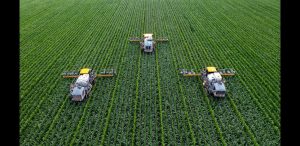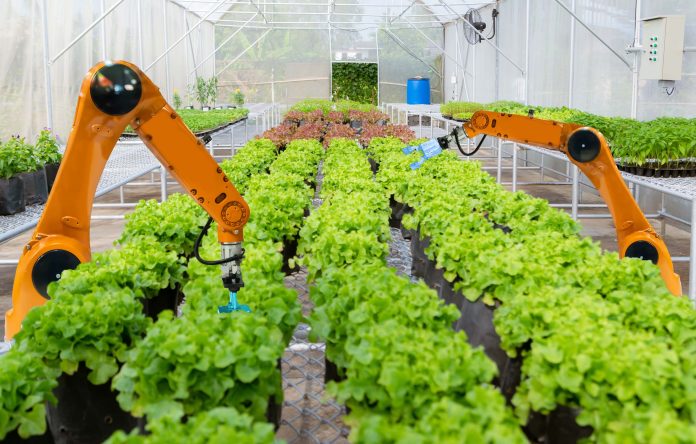Introduction
The global food system is undergoing a profound transformation. In 2025, the emergence of lab-grown food and tech-driven farms is shifting the very foundation of agriculture. Traditional farming, once reliant on fertile land, predictable weather, and seasonal labor, is being challenged by clean rooms, bioreactors, and artificial intelligence. The question is no longer “if” but “how soon” lab-grown food will replace—or coexist with—traditional agriculture.
This article dives into the science, implications, and future trajectory of lab-grown food. Can cultured meat and tech farms solve global food insecurity, reduce environmental damage, and still honor cultural food traditions? Let’s find out.
1. What is Lab-Grown Food?
Lab-grown food, also known as cultured or cell-based food, is produced by cultivating animal cells in controlled environments, bypassing the need for raising and slaughtering livestock. Instead of growing whole animals or plants, scientists grow tissues, proteins, or ingredients in labs or bioreactors.

Popular lab-grown products include:
- Cultured beef, chicken, and seafood
- Lab-grown dairy (milk and cheese from microbial fermentation)
- Plant cell-based fruits and vegetables grown without soil
This method reduces the need for traditional resources like land, water, and feed, while eliminating many ethical concerns surrounding factory farming.
2. How Do Tech Farms Work?
Tech farms refer to agriculture systems that rely heavily on automation, AI, robotics, and climate-controlled environments. These include:
- Vertical farms: Stacked layers of crops grown with hydroponics or aeroponics
- Bioreactors: Devices used for culturing animal cells or plant tissue
- Automated greenhouses: Equipped with AI systems for real-time crop monitoring
These technologies not only increase yield per square meter but also allow farming in urban areas and regions with harsh climates.
3. Advantages of Lab-Grown Food
a. Environmental Benefits:
- Uses 90% less water than traditional livestock farming
- Reduces greenhouse gas emissions by up to 80%
- Requires less land, preserving forests and biodiversity
b. Ethical Impact:
- Eliminates animal cruelty and mass slaughter
- Avoids the spread of zoonotic diseases from livestock to humans
c. Food Security:
- Localized production reduces dependency on imports
- Consistent year-round supply unaffected by climate changes
d. Health Control:
- Ability to reduce or eliminate antibiotics and growth hormones
- Opportunity to customize nutrients (e.g., omega-3-rich meat)
4. Challenges Facing Lab-Grown Food
a. High Production Costs:
- Although costs have decreased significantly, lab-grown meat is still more expensive than conventional options.
b. Public Perception:
- Concerns around “unnatural” food and safety
- Lack of understanding about how the food is produced
c. Regulatory Hurdles:
- Approval from health and food safety authorities varies across countries
- Labelling requirements still being defined
d. Scalability:
- Scaling up to meet global demand while maintaining quality is a challenge
5. Impact on Traditional Agriculture
The rise of lab-grown and tech-enhanced farming has significant implications for traditional agriculture:
a. Decline in Livestock Farming:
- Farmers may face job losses or be forced to transition into biotech roles
- Small-scale farmers could be displaced by tech monopolies
b. Changing Land Use:
- Less land needed for animal grazing
- Former farmlands could be reforested or used for carbon offsetting
c. Disruption of Supply Chains:
- Reduces need for feed production, veterinary services, and meat processing
d. Evolution of Agricultural Education:
- Emphasis shifting from agronomy to biotechnology and bioengineering
6. Cultural and Ethical Considerations
Food is not just sustenance—it’s deeply cultural. Lab-grown alternatives may struggle with acceptance in cultures where traditional farming is part of identity.
Questions being raised include:
- Will lab-grown food honor traditional tastes and textures?
- How will indigenous food knowledge be preserved?
- Are we eroding our connection to the natural world?
To succeed globally, cultured food must adapt to regional cuisines and respect cultural values.
7. Global Adoption Trends in 2025
United States & Europe:
- Significant investments in lab-grown startups
- Some restaurants now offer cell-based meat and seafood
Asia:
- High demand due to food security concerns in densely populated cities
- Singapore became the first country to approve lab-grown chicken
Africa & Latin America:
- Slower adoption due to infrastructure and affordability challenges
- Potential for leapfrogging directly to vertical farming
Governments are offering grants and policy incentives to encourage innovation in food tech, signaling a growing global momentum.
8. Role of Artificial Intelligence
AI plays a crucial role in the development and scaling of lab-grown food:
- Optimizes cell growth environments in bioreactors
- Monitors nutrient cycles in vertical farms
- Predicts taste profiles and consumer preferences
- Enhances supply chain logistics and waste reduction
AI ensures precision, consistency, and cost-efficiency in lab-grown production.
9. Tech Giants and Startups Leading the Way
**Notable Companies

